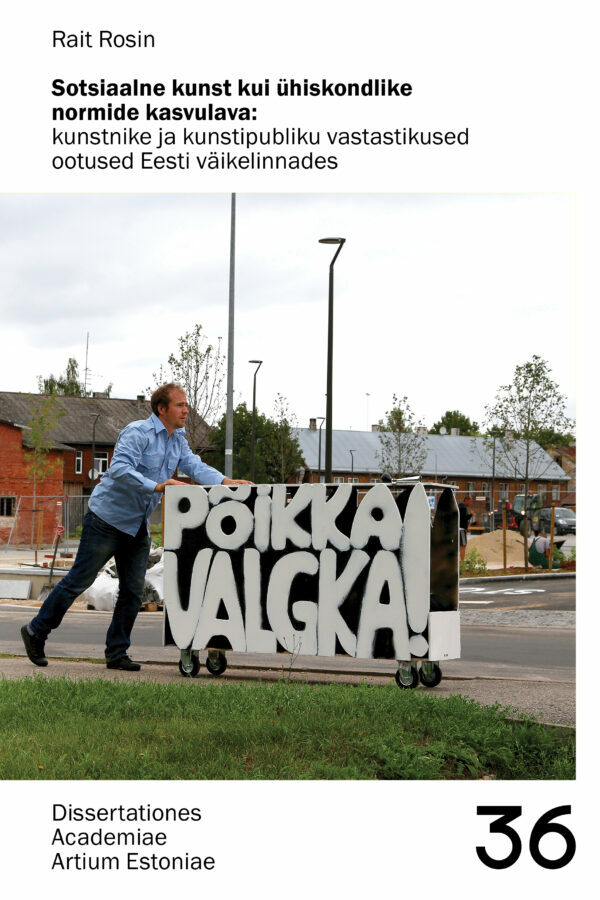
The starting point of the dissertation is the fact that the emerging interest in Estonian art in places outside of Tallinn needs a more consistent, constructive and critical exchange of ideas. Art galleries located in regional centers and local expectations regarding the activities of artists connected to their hometown are discussed in the artistic research doctoral thesis.
In the comparison of different exhibition places, an overview of the peculiarities shaping the regional image is formed using the example of six small towns in Estonia – Paldiski, Haapsalu, Valga, Võru, Rapla and Rakvere. The discussed art actions and exhibitions are located in the period 2010-2017. On the one hand, the comparative analysis of the interviews of the gallery audience and the artists reflects the perceptions of both parties about the local art life and gives a picture of the multi-layered nature of the Estonian art life and cultural action schemes in the midst of wider societal changes. The author interprets the interpretations of the participants in the theoretical part of the work in the tension of the center and the periphery, which characterizes intra-cultural communication, trying to evaluate the contribution of artists to the life of small towns with the help of interviews. On the other hand, it is an artist’s introspection, which is positioned among art initiatives related to small towns in Estonia. The thesis is situated in a discourse that considers inclusive art as a socially active activity. Based on the examples of philosophers John Dewey, Jacques Rancière, etc., the author comes to the conclusion that artists working far from the center should prefer solutions that bind the interest and activity of the locals, which allow art to be understood and treated as a field of meaning that integrates different parties at the community level. Thus, the doctoral thesis deals with the images circulating in the artistic life of small towns in Estonia, both the tasks set for art and the professional feedback that accompanies artistic creation – and which is often absent in the periphery.
Supervisors: Dr. Raivo Kelomees (Estonian Academy of Arts) and Margus Vihalem (Tallinn University)
Preliminary reviewers: Dr. Heie Marie Treier (Tallinn University), Dr. Elo-Hanna Seljamaa (University of Tartu)
Opponent: Dr. Heie Marie Treier
Language editor: Eva Velsker
English editor: Djuddah Arthur Joost Leijen
Design and layout: Indrek Sirkel
Dissertations Academiae Artium Estoniae 36
230 pages, in Estonian
Estonian Academy of Arts, 2021
ISBN 978-9916-619-47-6
